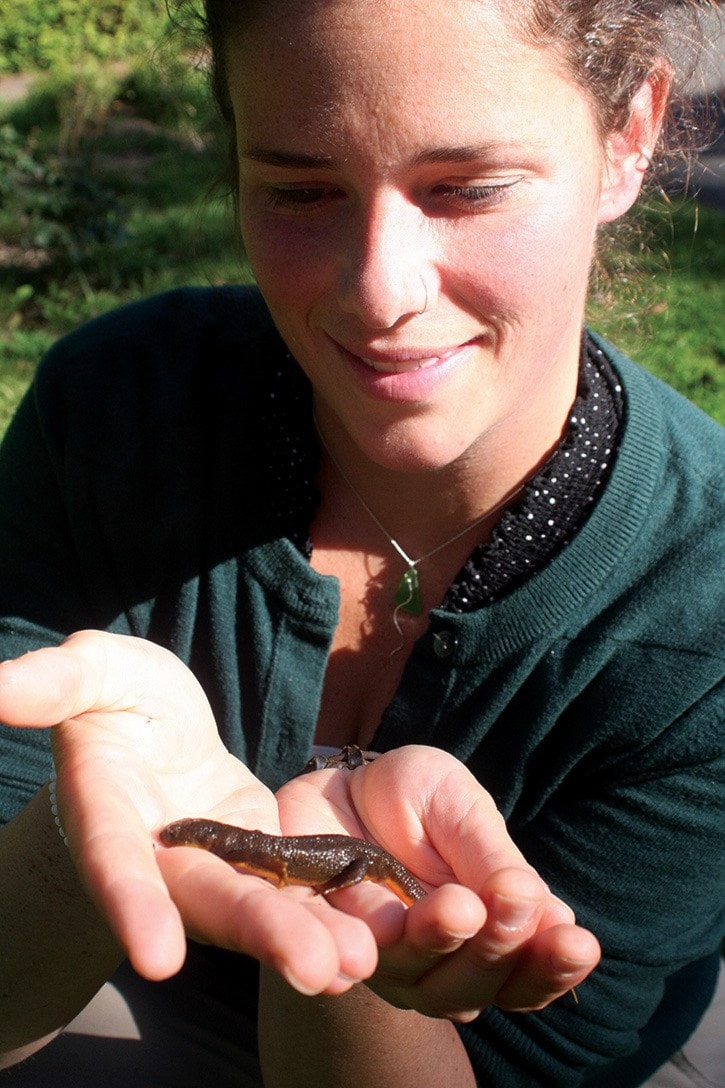Holding a rough-skinned newt in her hand, Jill Robinson can’t help but think about what’s been happening to the delicate little creatures whenever they cross the road at night.
Early last spring, a biologist and team of volunteers with Habitat Acquisition Trust (HAT) surveyed local roads after concerned citizens reported seeing dead frogs.
The team discovered hundreds of dead frogs and salamanders on roads within the Greater Victoria area. In just one night, 369 amphibians were counted on a small section of West Saanich Road, and now that the seasons are changing it’s happening again.
“It’s pretty devastating,” said Robinson, a member of HAT — a group dedicated towards conserving nature on south Vancouver Island. “Some of them are alive, but most of them have been totally squished.”
According to Robinson, a lot of HAT’s energy so far has been focused on rural areas in the region, but there’s a number of ponds in the region that could also be locations for migration this fall.
The cooler, wet weather is expected to bring a mass migration of baby frogs and salamanders from their wetland habitat to the forest for the winter. Some are already on the move.
During another survey that took place from Aug. 29 to Sept. 3, 480 amphibians were found dead on roads in west Saanich and the Highlands. Sixty-three of those were Pacific tree frogs, 40 were rough-skinned newts and 98 were bullfrogs.
The deaths, said Robinson, are having a significant impact on the species’ populations. Where exactly the amphibians are migrating from is what HAT is trying to determine.
In order to identify hot spots for road kill, HAT is asking for the public’s help with reporting frog and salamander crossings this fall. The problem, said Robinson, is that many species migrate at night when it’s raining, often leaving little trace of their deaths at sunrise.
“Unless you are out there at night time when it’s raining and seeing all the devastation, most of the time in the morning there’s nothing left because scavengers have come along,” said Robinson. “This is one of the leading factors to what’s devastating a lot of populations so figuring out where these hot spots are is really important in order to come up with some sort of mitigation measures so we can reduce this impact.”
More than 60 per cent of frog and toad species in B.C. are now listed by federal and provincial agencies as species of concern. Rough-skinned newts and Pacific tree frogs are having a particularly rough time.
Robinson said there are a few things that can be done to improve road safety for amphibians, like installing fences re-directing the critters to lit culverts or creating tunnels, but first the problem areas need to be identified.
Anyone that sees the critters crossing the road, or has observed high mortality areas is asked to report the sighting by filling out a form at hat.bc.ca.
editor@goldstreamgazette.com
